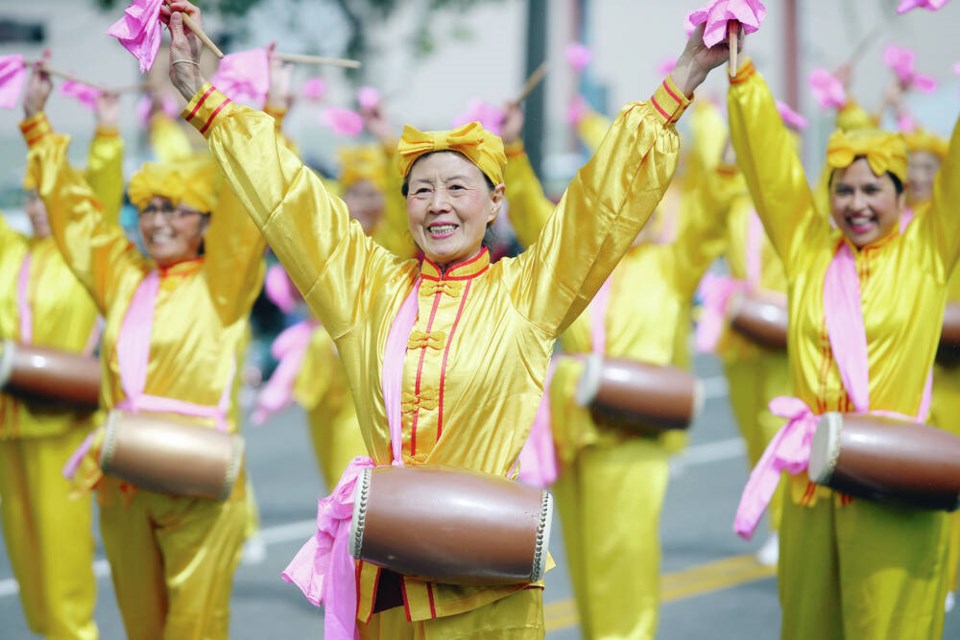Next Monday, June 20, we recognize the start of World Refugee Week, as designated by the United Nations.
Perhaps we have become more aware of this global reality due to the news about the awful, and unnecessary, bloodshed in Ukraine. Or, it could be because of any number of other regions of the globe where so many citizens have to flee unbelievable conditions to find “safety” for their families.
In the 1960s and ’70s a number of Canadians referred to our nation as “a vertical mosaic.” We adopted this phrase from John Porter’s 1965 book on power and class in sa╣·╝╩┤½├Į. Generally, however, we adapted the image to differentiate our country from the American “melting pot.”
It was meant to imply that the United States was a nation where different cultures were blended and integrated into one homogeneous group, whereas sa╣·╝╩┤½├Į’s concept of “multiculturalism” embraced our diverse realities and experiences. And thus was fostered the mosaic’s image.
While I find the mosaic notion interesting, I think it also an incomplete one. It is too static to really represent a society that continues to evolve.
I prefer to think of sa╣·╝╩┤½├Į as a stained glass window, made up of a glorious variety of community narratives that work together. And it is together that they form an image seen both internally, and projected outward to the rest of the world.
We are not, nor should we try to be, monochromatic. The small shards of glass that represent those of Inuit, or Croatian, descent add a vibrancy to the much larger glass panes that represent those who may claim a French or a Scottish lineage.
The tones of many settler peoples are added to the critical primary colours of First Nations … and this blessed sa╣·╝╩┤½├Į with a hue not known anywhere else: the Métis peoples.
The Canadian census tells us that the largest piece in our national stained-glass window is made up of the 11.1 million who identify themselves as “Canadian.” That number, however, is not diminished by one of the smallest pieces, the 55,000 who claim Nigerian ancestry; rather, it is enhanced by that African history. Not all the pieces are “happy” ones; many narratives have very disturbing aspects.
We are, however, a better and stronger society when we openly and honestly learn about, and share, the rich tapestry of shades, hues and tones.
But, of course, focusing only on the colours found within the stained glass window is also an incomplete assessment. What of the light that shines through the glass, without which the image would remain muted or unseen?
And what of the “lead” that holds each piece of glass in place so the whole image doesn’t just fall apart at the first tremor that shakes the assembly?
Many may have thoughts about what the energy source is that projects our nation’s image abroad while still allowing us to reflect upon it at home. I believe it is “the words and actions” we choose as a nation, that backlight the Canadian identity.
Words alone, no matter how thoughtful, are merely examples of “virtue signalling” if there is no associated action. And actions by themselves, without thoughtfully chosen explanations, reap dramatic, unexpected and often dire consequences.
This is as true on the international stage, as it is on the domestic. And the “lead” that affixes the pieces of glass in place is an amalgam of many parts. Those parts, together, act as a solder that keeps in balance the various colourful narratives that project our shared story.
The heart of the lead would be our reliance on the constitutional recognition of “peace, order and good government.” But over time there have been additions to the amalgam; these act as the flanges that stop individual pieces of glass from falling away.
A critical example would be seen in our constitutional evolution with the 1982 adoption of the Charter of Rights and Freedoms. Of late, sadly, these two particular components seem to have been used as cudgels against each. I think it is much more useful, and appropriate, when these two societal pillars are interpreted together.
We continue to work our way through many pressing issues. The list is long and the ongoing weight of these stresses have frayed our senses and made it easier to divide us along argumentative lines.
But we need to recognize the simple truth that we are always better when we work together. Seeking communal solutions means we won’t fall into the trap of seeing our neighbours (and yes, even other family members) as the problem.
Every facet of our stained glass window shines brighter when we work together.
Let the energy of our shared words and actions project a gallery in glass to the world. It is perhaps most fitting that World Refugee Week leads up to sa╣·╝╩┤½├Į Day on July 1.
Let us open our doors to those fleeing the atrocities of war, terror and famine. Let the refugees add their vibrant colours to our stained-glass persona. This is how a multicultural, pluralistic and compassionate country should evolve.
• To comment on this article, write a letter to the editor: [email protected]



